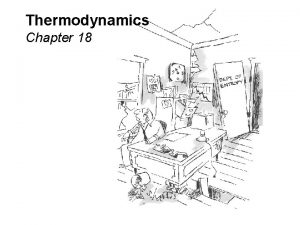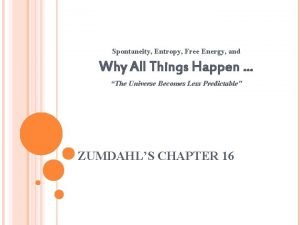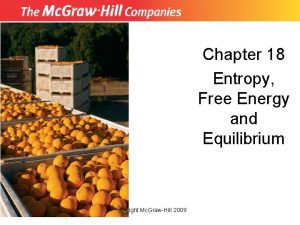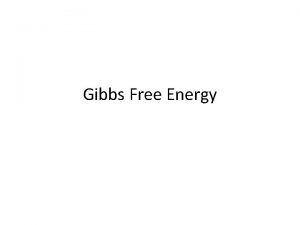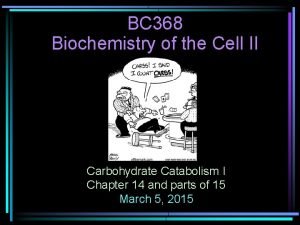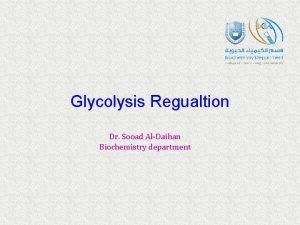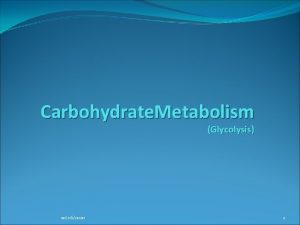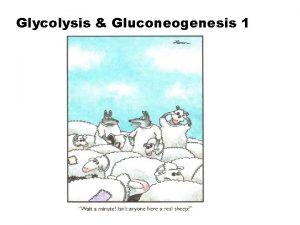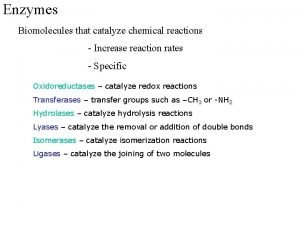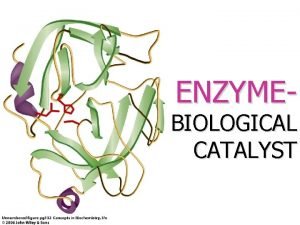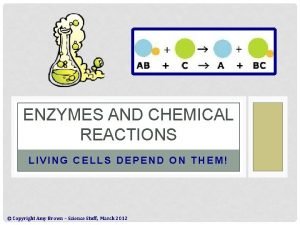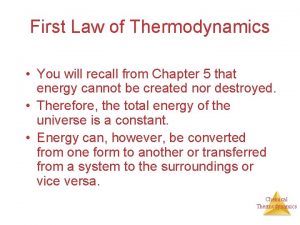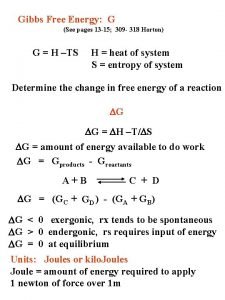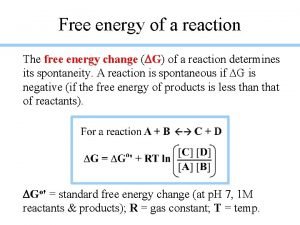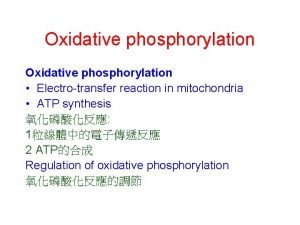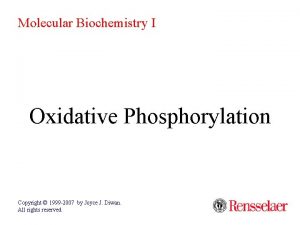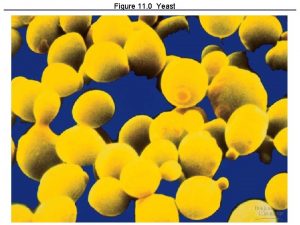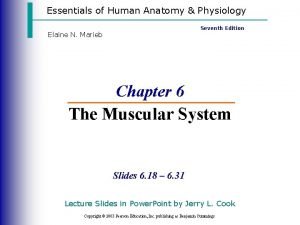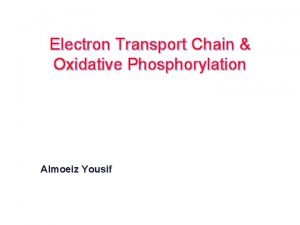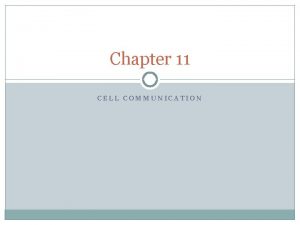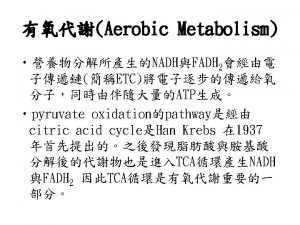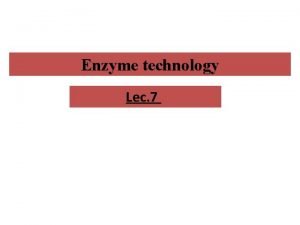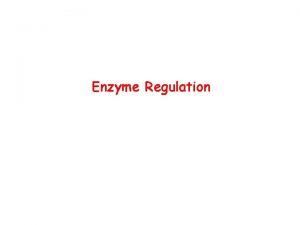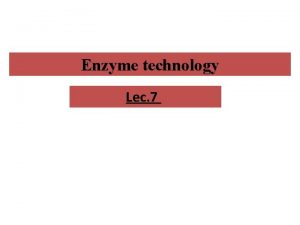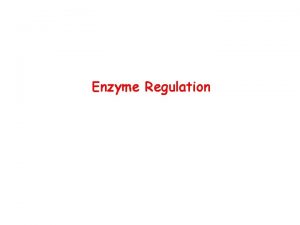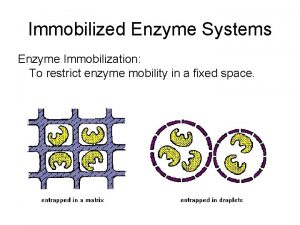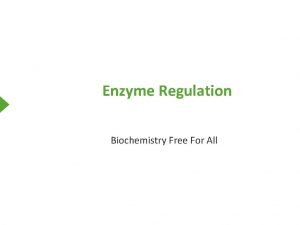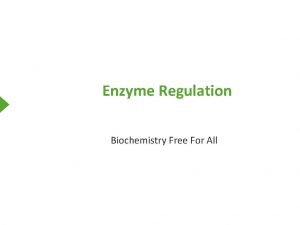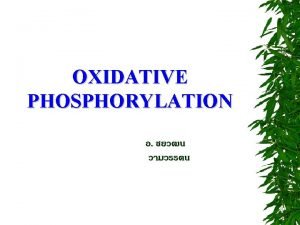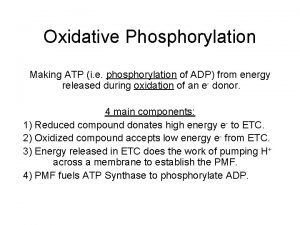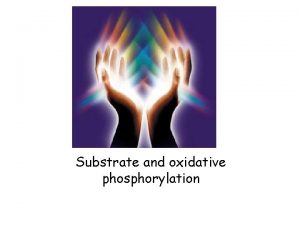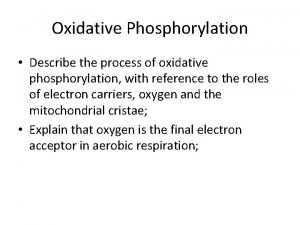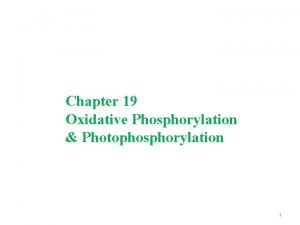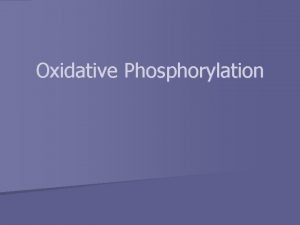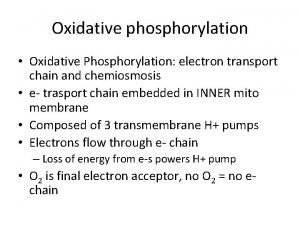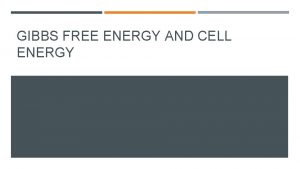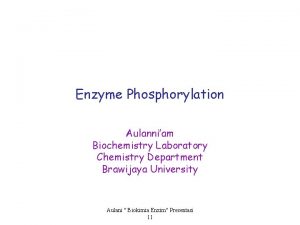Enzyme Hexokinase Reaction Phosphorylation Free Energy Change Standard






























- Slides: 30











Enzyme: Hexokinase Reaction: Phosphorylation Free Energy Change: • Standard Conditions: -4. 0 kcal/mol • Physiological Conditions: -8. 0 kcal/mol irreversible Enzyme: Phosphoglucose isomerase Reaction: Aldose to Ketose Isomerisation Free Energy Change: • Standard Conditions: +0. 4 kcal/mol • Physiological Conditions: -0. 6 kcal/mol reversible Enzyme: Phosphofructokinase Reaction: Phosphorylation Free Energy Change: • Standard Conditions: -3. 4 kcal/mol • Physiological Conditions: -5. 3 kcal/mol irreversible

Enzyme: Aldolase Reaction: Aldol Cleavage Free Energy Change: • Standard Conditions: +5. 7 kcal/mol • Physiological Conditions: -0. 3 kcal/mol reversible Enzyme: Triose phosphate isomerase Reaction: Ketose to Aldose Isomerisation Free Energy Change • Standard Conditions: +1. 8 kcal/mol • Physiological Conditions: -+0. 6 kcal/mol reversible Enzyme: Glyceraldehyde 3 -phosphate dehydrogenase Reaction: Coupled Oxidation & Phosphorylation Free Energy Change • Standard Conditions: +1. 5 kcal/mol • Physiological Conditions: -0. 4 kcal/mol reversible

Enzyme: Phosphoglycerate kinase Reaction: Dephosphorylation Free Energy Change: • Standard Conditions: -4. 5 kcal/mol • Physiological Conditions: +0. 3 kcal/mol reversible Enzyme: Phosphoglyceromutase Reaction: Phosphate group shift Free Energy Change: • Standard Conditions: +1. 1 kcal/mol • Physiological Conditions: +0. 2 kcal/mol reversible

Enzyme: Enolase Reaction: Dehydration Free Energy Change: • Standard Conditions: +0. 4 kcal/mol • Physiological Conditions: -0. 8 kcal/mol reversible Enzyme: Pyruvate kinase Reaction: Dephosphorylation Free Energy Change: • Standard Conditions: -7. 5 kcal/mol • Physiological Conditions: -4. 0 kcal/mol irreversible Enzyme: Lactate dehydrogenase Reaction: Reduction Free Energy Change: • Standard Conditions: kcal/mol • Physiological Conditions: kcal/mol reversible






Enzyme: Citrate synthase Reaction: Condensation Acetyl Co. A condenses with oxaloacetate first, to form citryl Co. A. Then citryl Co. A is hydrolyzed to citrate and Co. A. Prosthetic group: No Enzyme: Aconitase Reaction: Dehydration Citrate is isomerized to isocitrate by this first dehydration and yields cis-aconitate as an intermediate. Prosthetic group: Fe-S Enzyme: Aconitase Reaction: Hydration of cis-aconitate gives the interchange of H atom and OH group from the step 2. Prosthetic group: Fe-S

Enzyme: Isocitrate dehydrogenase Reaction: Oxidative decarboxylation Dehydrogenation of isocitrate occurs and yields oxalosuccinate as an intermediate. Then CO 2 leaves to have alphaketoglutarate. This reaction gives NADH. Prosthetic group: No Enzyme: alpha-Ketoglutarate dehydrogenase complex Reaction: Oxidative decarboxylation This mechanism is almost as same as the reaction of the oxidative decarboxylation of pyruvate to acetyl Co. A by pyruvate dehydrogenase complex. This reaction gives one NADH. Prosthetic group: Lipoic acid, FAD, TPP Enzyme: Succinyl Co. A synthetase Reaction: Substrate-level phosphorylation The thioester bond of succinyl and Co. A is an energy rich bond. Thus only this step gives a high-energy phosphate compound, GTP from the couple reactions of the thioester bond cleavage and the phosphorylation of GDP. Prosthetic group: No

Enzyme: Succinate dehydrogenase Reaction: Oxidation The two hydrogens of succinate leave to an acceptor, FAD. Then this reaction yields fumarate and FADH 2. Prosthetic group: FAD & Fe-S Enzyme: Fumarase Reaction: Hydratation Fumarate is hydrated to give Malate. Prosthetic group: No Enzyme: Malate dehydrogenase Reaction: Oxidation Malate is dehydrogenated to form oxaloacetate. The hydrogen acceptor is NAD. So this reaction yields NADH. Prosthetic group: No








 Gibbs free energy and spontaneity
Gibbs free energy and spontaneity Boltzmann entropy equation
Boltzmann entropy equation Rt ln k
Rt ln k Units for free energy
Units for free energy What is spontaneity in chemistry
What is spontaneity in chemistry Free energy
Free energy Standard free energy change
Standard free energy change Non standard gibbs free energy
Non standard gibbs free energy Helmholtz free energy and gibbs free energy
Helmholtz free energy and gibbs free energy Oxidative phosphorylation energy yield
Oxidative phosphorylation energy yield Enthalpy
Enthalpy Clinical significance of god pod method
Clinical significance of god pod method Hexokinase vs glucokinase
Hexokinase vs glucokinase Hexokinase vs glucokinase
Hexokinase vs glucokinase Biochemistry
Biochemistry Diff between hexokinase and glucokinase
Diff between hexokinase and glucokinase G=rt ln(q/k)
G=rt ln(q/k) Hexokinase
Hexokinase Is hexokinase a transferase
Is hexokinase a transferase Enzymes speed up chemical reactions by ____
Enzymes speed up chemical reactions by ____ Entropy of the universe
Entropy of the universe Standard gibbs free energy formula
Standard gibbs free energy formula Atp hydrolysis and free energy change
Atp hydrolysis and free energy change Pearson
Pearson Uncouple oxidative phosphorylation
Uncouple oxidative phosphorylation Uncouplers of oxidative phosphorylation
Uncouplers of oxidative phosphorylation Paracrine signaling
Paracrine signaling Direct phosphorylation
Direct phosphorylation Phosphorylation definition
Phosphorylation definition Phosphorylation cascade
Phosphorylation cascade Substrate level phosphorylation vs oxidative
Substrate level phosphorylation vs oxidative



